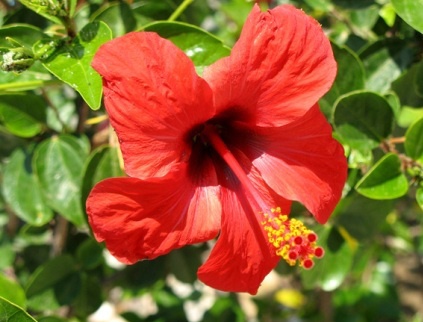Instruction
1
Hibiscus flowering occurs mainly from spring until autumn. Light for growing this type of plants need a bright, diffused. During the autumn and winter season allowed the sunlight rays. In the spring and summer period preferably a light without direct sunlight.
2
Temperature for hibiscus needs moderate. In spring and summer, the optimum temperature is 18-22 degrees. In the autumn and winter - 14-16 degrees. If the temperature is less than 10 degrees, the hibiscus may drop leaves and even die.
3
During flowering watering hibiscus profusely as drying the top layer of the earth. In autumn and winter, watering is moderate, after two or three days after drying the top layer of the earth. Holding the plant in winter, at temperatures below 14 degrees, contain the soil moderately moist. When watering it is impossible to prevent waterlogged or, conversely, over-drying of the soil.
4
Humidity plays a significant role, however, it is desirable to spray the plants, especially during flowering. This procedure is also a preventive measure against spider mites.
5
Feeding. In the spring and summer need regular fertilizing 1 time per month nitrogen-containing fertilizers, they encourage long bloom. In winter, enter only the phosphorus and potassium in the substrate, at a half dose, 1 time per month or when almost dry content in the cool conditions, do not fertilize at all.
6
The period of dormancy, hibiscus comes in approximately from November to February, when the optimum temperature is 12-15 degrees. Take care of good lighting and moderate but regular watering. The winter plant can in the trimmed condition.
7
Transplant the young shoots should be carried out annually, in the spring. Adult plants are transplanted every two to three years. Hibiscus is propagated by cuttings, can also be propagated by seeds.
Note
With ventilation, avoid exposure of the flower, otherwise it may die.
